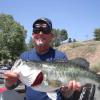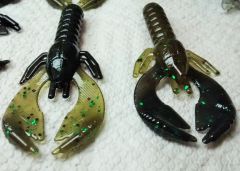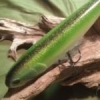Leaderboard
-
in all areas
- All areas
- Images
- Image Comments
- Image Reviews
- Albums
- Album Comments
- Album Reviews
- Topics
- Posts
- Stories
- Story Comments
- Story Reviews
- Classified Ads
- Classified Ad Comments
- Classified Ad Reviews
- Records
- Record Comments
- Record Reviews
- Websites
- Website Comments
- Website Reviews
- Status Updates
- Status Replies
-
Custom Date
-
All time
February 2 2011 - November 27 2024
-
Year
November 27 2023 - November 27 2024
-
Month
October 27 2024 - November 27 2024
-
Week
November 20 2024 - November 27 2024
-
Today
November 27 2024
-
Custom Date
04/09/2015 - 04/09/2015
-
All time
Popular Content
Showing content with the highest reputation on 04/09/2015 in all areas
-
I have it but before posting to U tube and etc I think we need to get the ok from his kids .. It is copyrighted. Will get back later1 point
-
I cut the lip slot and drill all my holes from the block, before I even cut the profile. This way I can use standard drills and not worry about chipping. The drill press gives me holes as good as the angles of my block. If I want more accuracy, say for a through hole or for holes to intersect, I use a pin alignment method. In the days when I had to cut holes from a carved body; I used a series of drills, starting with 2mm dia, increasing until I get to my desired diameter. I run the drills in reverse and then forwards - no chips. Dave1 point
-
It's going to be hard to drill a straight hole if your center filler material is harder than the wood on either side. I would try clamping the two wood sides together and drilling them before I made the sandwich. Just put something temporary in the hole to keep it clean when you do your final sandwiching. I use a wooden jaw Jorgensen clamp to hold baits when I have to drill an already shaped bait. http://www.woodcraft.com/Product/413640/Jorgensen-6-Adjustable-Handscrew-Model-30.aspx1 point
-
It is hard for me but I make it work and get things out within two weeks. My wife helps me seeing how she is the homemaker and house wife. My kids like to get involved with handing me skirting material or the skirts, and they actually put together spinner baits .... We make it a family function and time also, if your kids are old enough that is. Mine are 7 and 6, my daughter helps the most between the two. She does not want to dance, softball, cheerlead or nothing, she just wants to do something fishing wise ... My wife pours the plastics and makes the skirts, and I do the pouring of the jigs and painting and assembling ... See if you can make it a family affair, we love it here. Teaches my kids hard work.1 point
-
I use spoons I liberated from the kitchen drawer. I would love to get my hands on one of these DVDs. Rip it to my HDR and upload it to YouTube.1 point
-
1 point
-
Years ago I had a federal Biologist give me a good inside lesson. The Biologist gets out busts his butt doing research and etc. gets all the nitty gritty .... then the politicians get a hold of it and change it so that it suits there political plans ... A lot of logic on these various subjects and the politicians twist it to suit them selves... I could really get on my "Soap Box" about this but will bite my tongue .. I think most of you guys understand this subject.1 point
-
I just foiled four baits, you can run the one inch wide verticle and match it up on the next inch, pretty simple, and once painted cannot tell. I also use stampee foil with same glue. Not sure how to add a picture to the post or I can show you the ones I just finished in holographic swirl gold and silver.1 point
-
1 point
-
At Rowhunter's suggestion, I'm starting a PVC thread. I use it for all my lure building, for the following reasons: It is totally waterproof, so I can shape a lure, and then test float and ballast it without any sealing. I have a 3 gallon bucket of water in my driveway that I use for test floating. It is buoyant. The Azek PVC decking is as buoyant as poplar, a hardwood I used to build my jointed swimbaits from. The Azek trimboard is even more buoyant, like medium density balsa. I can make really active shallow cranks with it. It is strong. The decking is as strong as any wood, for lure building, and the trimboard, although not as dense, is still plenty strong enough for any crank. And I use it for my smaller two piece jointed lures, too. I caught a 7lb largemouth with a PVC trimboard spybait I made that was 4" long, but only 7/16" thick, and I had drilled several 3/16" holes up from the belly for my ballast. She ate the rear hook, and the bait held up fine. Both are strong enough to hold screw eyes with just a small pilot hole. No need for any reinforcement, or setting into holes filled with epoxy. I usually use the gap filling/brush on super glue alone to set my hardware, and a lot times my bills, too. I use the accelerant (thank you Ben) dripped onto the glue to help it set quickly, once things are positioned. It machines and carves well. Although the sanding dust is nasty, because it sticks to everything, including my sinuses, PVC is easily machined and shaped with the same tools I used for wood. As with any work, sharp tools work best. I cut out my bait profile, and lip slot, with a bandsaw, and try to drill any ballast hole while the bait has the flat sides, so I can drill straight holes with my drill press. I use an oscillating belt sander with an 80 grit belt to do my major shaping, working from a centerline I put on the bait after I've sanded the bandsaw marks off. I "carve" details with a dremel sanding drum, and drill out my eyes with a multi-spur bit on a drill press. I typically sand down from 80 grit to 120 grit with a vibrator sander, and finish up with a small piece of sandpaper to get edges and details softened. Because it has no direction-oriented grain, it carves really well with sharp tool. It can be laminated into bigger lure blanks using the same PVC glue plumbers use for PVC pipe, or you can use super glue. If you use both the PVC primer and the glue, the two pieces actually melt into one solid piece. As long as the two surfaces are flat and mate, you're good to go. It paints well. I can shoot Wicked White as a base coat onto a raw PVC bait, heat set it, and never have any separation problems with my paint schemes. When I've had occasion to remove some paint to modify a bait, I've had to sand down to the PVC to get the paint off. It never peels. Occasionally, heat setting too hot can cause trapped air to bubble up under the seal coat, so I generally seal baits by rubbing crazy glue, or thinned epoxy, over them before I paint, if I want a super smooth bait. But any bubbles that do appear can be popped by the sharp tip of an exacto knife, and they lay right back down when I press them with my exacto knife handle. I've never had any baits with popped bubbles fail. And, because it is totally waterproof, I don't have to worry about nicks and scuffs from rocks and hooks. Any top coat works. I've used epoxies, urethanes, and concrete sealers, with no problems. In short, it make lure building faster and easier, and that make it even more fun, so why I use it.1 point
-
no u can do it outside . I do it just to re-cycle the media and not make as big a mess- it will make quite the cloud of white dust!! I hook my shop vac up to my cabinet and let it run- pulls a lot of dust so you can see whats going on1 point
-
1 point












